Puerto Rican Recipes Plantains Ground Beef
Pastelon – This Latin-style (Puerto Rican) plantain lasagna combines sweet and savory flavors with spiced beef sandwiched between layers of plantains and topped with cheese and eggs. It's an absolutely incredible meal for special days or even just a regular weeknight dinner. 😉
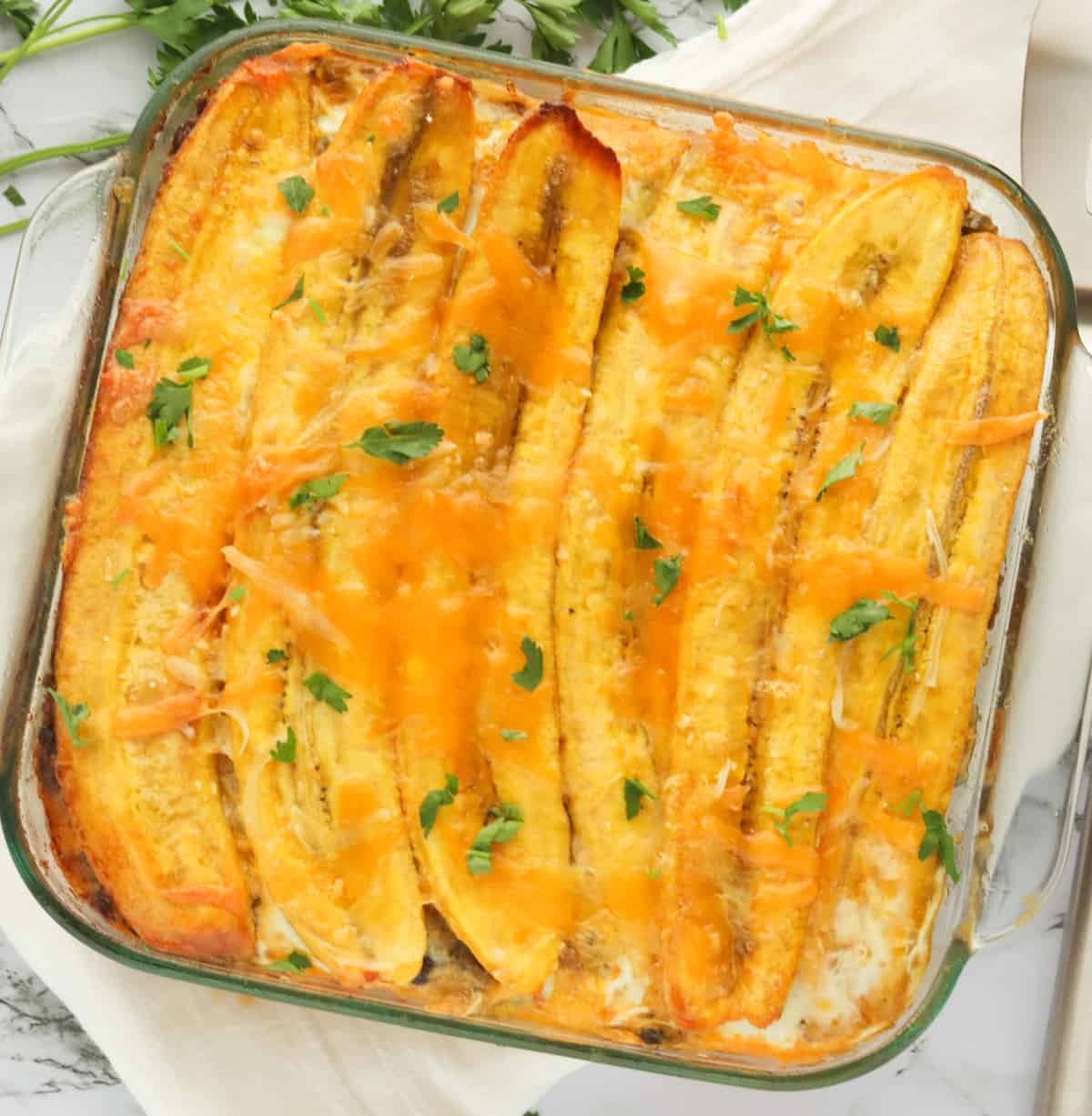
Are you still on the fence about plantains? I get it. If you aren't from a culture that incorporates them in the local cuisine, you might not know what to do with these "extra-large bananas." The good news is that they're easy to come by, delicious, versatile, and super easy to cook with, so you can find a ton of plantain recipes here on Immaculate Bites.
Today's recipe, pastelón, a.k.a. plantain lasagna, will make you hop right over the fence and join Team Plantain. 😜 And if you are already a plantain fan, then here is one more recipe to add to your plantain cooking arsenal. Seriously, you can do so much with plantains, am I right?

Piñon vs. Pastelon
More than once, people have told me that this recipe is actually calledpiñon instead ofpastelón. So I did a bit of research on the matter. As with most dishes, I found that there's more than one way to prepare pastelon. In fact, even different regions of the same country often have different preparations or names for similar dishes.
That said, the main difference I found is that although both piñon and pastelón are popular Puerto Rican dishes that layer plantains, the plantains in piñon are typically mashed before they're layered out. Another thing is that piñon also has canned green beans and kidney beans mixed into the beef filling. No matter what you call this dish, we can all agree that it's truly an indulgent, wholesome recipe!
Recipe Ingredients
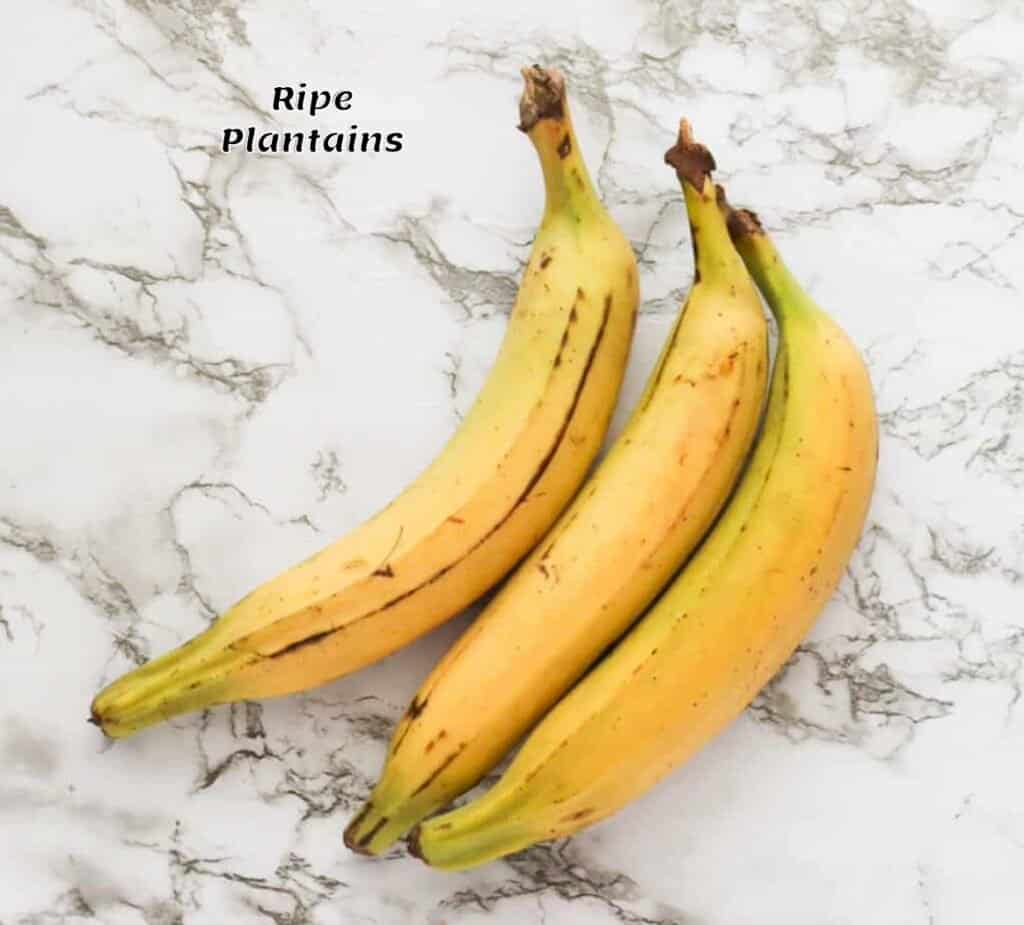
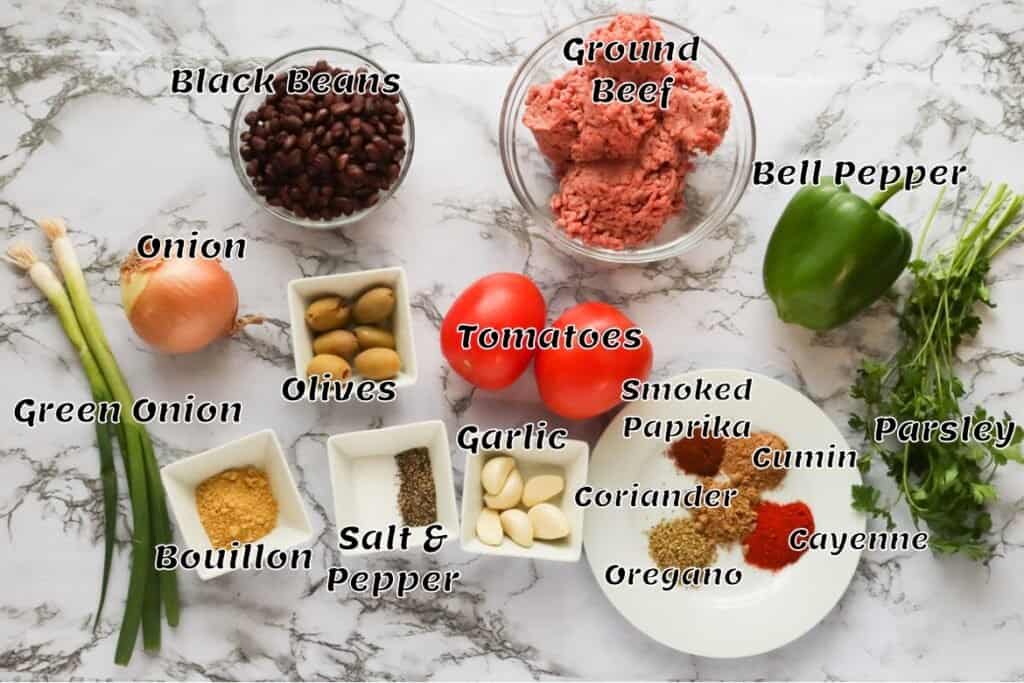
- Ripe Plantains – You don't want green plantains because the sweetness from ripe ones makes for a fabulicious balance of sweet and savory flavors.
- Spices – Cumin, smoked paprika, dried oregano, thyme, ground coriander, and cayenne pepper (if you like a little kick) make this dish super flavorful.
- Ground Beef or Chicken – It's your call because either meat makes for a fantastic pastelon.
- Black Beans – because this isn't your average Italian mama's lasagna. Trust me; the beans really add something special here.
- Olives – An ingredient often found in Puerto Rican cuisine, olives add another layer of flavor to this recipe.
- Eggs – This element binds the pastelon together.
How to Make Pastelon
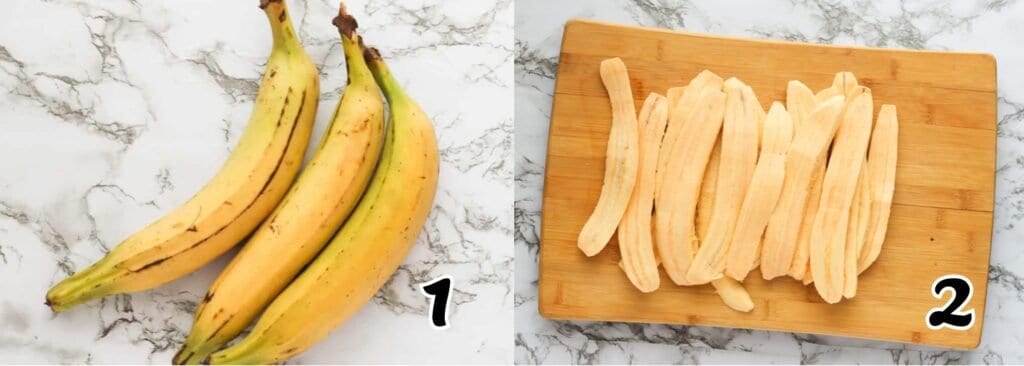
Prepare the Plantains
- Peel – Using a sharp knife, cut both ends off the plantain. That will make them easier to peel. Then slit a shallow line down the peel of the plantain from top to bottom and remove the peel by pulling it back. (Photo 1)
- Slice the plantains into long strips. You can usually get 4-5 pieces per plantain, depending on its size.
- Cook – From here, you can either fry or bake the plantains. (Personally, I prefer frying. 😋) (Photo 3)
Frying Plantains
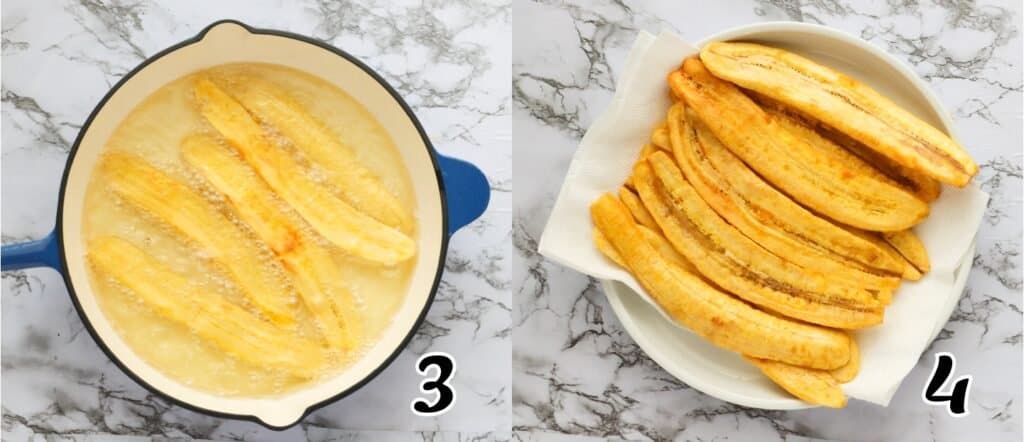
- Heat the Oil – Heat a large skillet or cast iron with oil about ½ inch deep on medium-high heat until it is hot but not smoking.
- Fry the plantain in batches, turning once, until lightly brown for about 5 minutes.
- Drain – Use a slotted spoon to remove the fried plantains and drain them on paper towels.
Baking Plantains
- Oil the Pan – Spray a baking sheet lightly with cooking oil (preferably canola oil) and arrange the plantains in a single layer.
- Lightly Oil Plantains – Once arranged, spray the side of the plantains facing up with canola oil lightly.
- Bake at 400℉/205℃, turning over the slices after 8 minutes.
- Brown – Bake for about 12-20 minutes or until they turn light brown.
Make the Filling
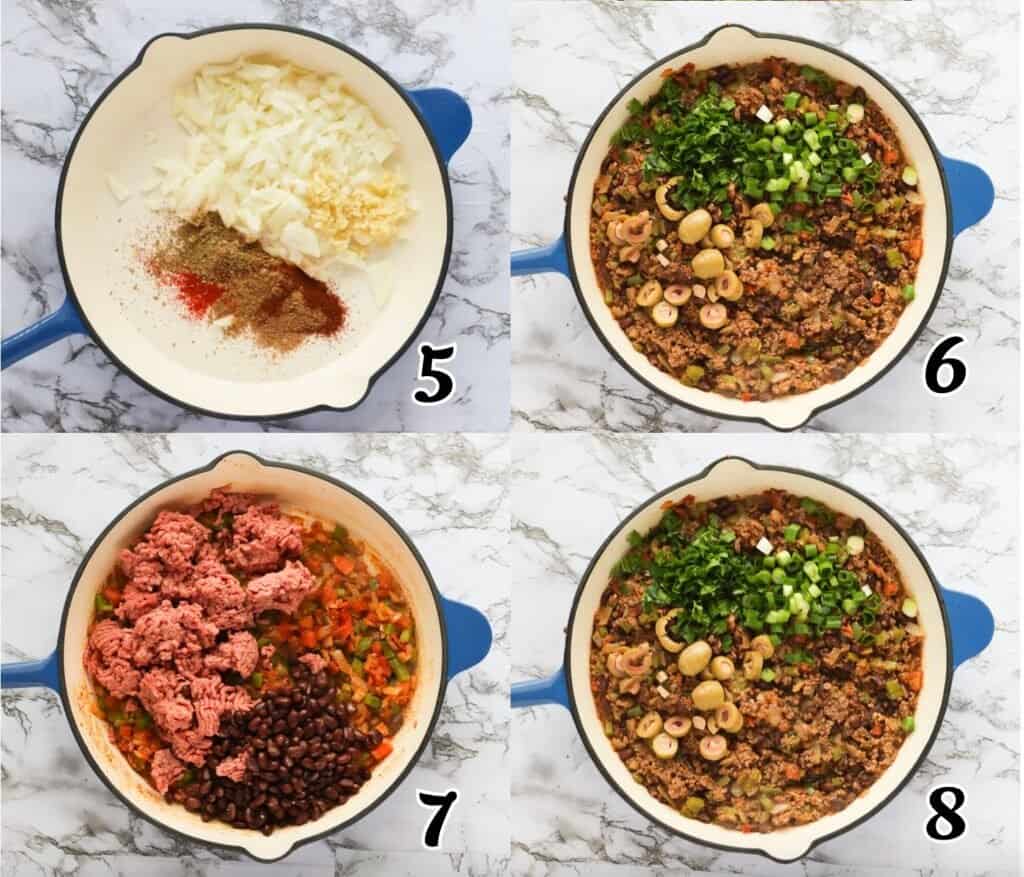
- HeatOil – Add about 1-2 tablespoons of oil to a skillet on medium-high heat.
- SauteSeasonings – Add the onions, garlic, cumin, smoked paprika, cayenne, oregano, and coriander, then sauté for about a minute.
- AddVeggies – Then add the bell pepper and tomato sauce and bring to a simmer.
- CookMeat – Add the ground meat and beans and cook for about 7-10 minutes while stirring frequently. Season with salt, chicken bouillon or sazon, and black pepper.
- FinalStretch – Finally, add olives, green onions, and parsley, adjusting the seasonings to taste.
- SetAside – Remove the filling from the heat and set it aside.
Assemble the Plantain Lasagna
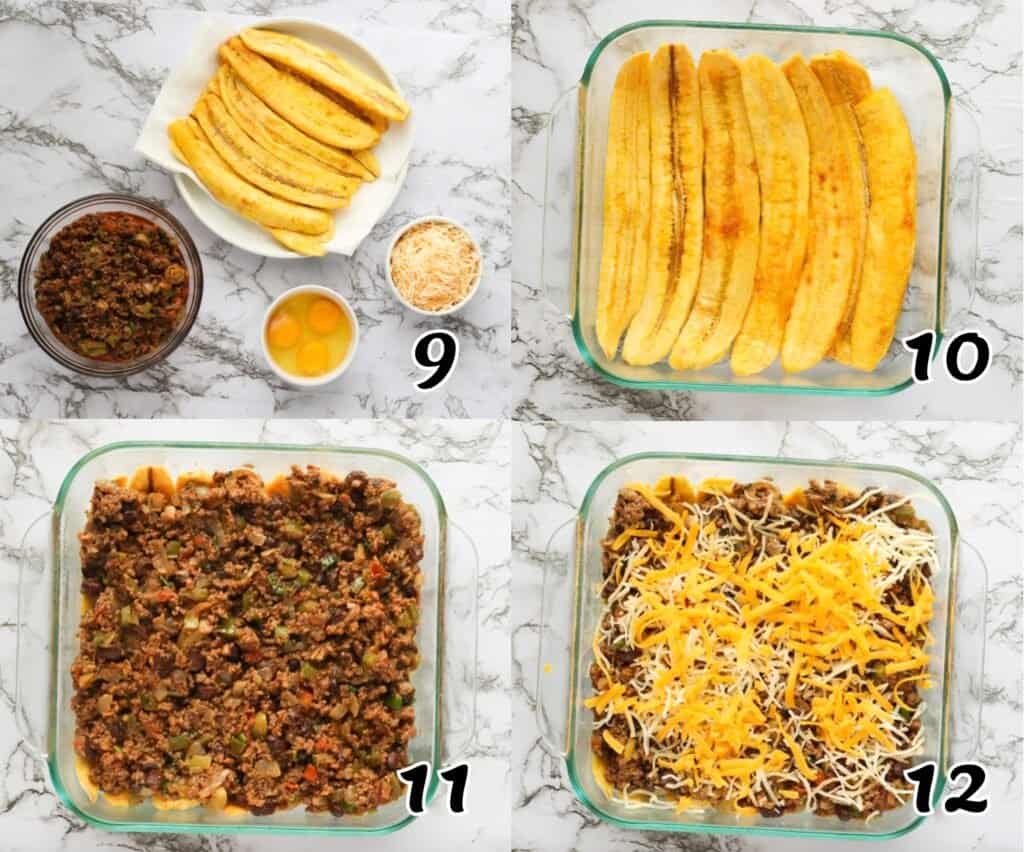
- Start First Layer – Line the bottom of the baking pan with the fried or baked plantains. Make sure there is no space between the plantains.
- Add Second Layer – On top of the plantains, add a decent amount of the beef mixture to make a layer, just like you would prepare lasagna.
- Repeat = Alternate rows of plantains and meat until both are used up. Add optional cheese in between each layer, if desired.
- FinalTouch – When you've finished layering, whisk the eggs in a large bowl and pour them over the top of the pastelon. Make sure you cover the entire thing.
- OptionalTopping – Add cheese on top if desired or leave it out – it's up to you.
- Bake at 350℉/177℃ for 25-30 minutes, or until the egg has cooked through and the cheese is bubbly.
- Cool – Let the pastelon cool for 5 minutes, and then serve warm.
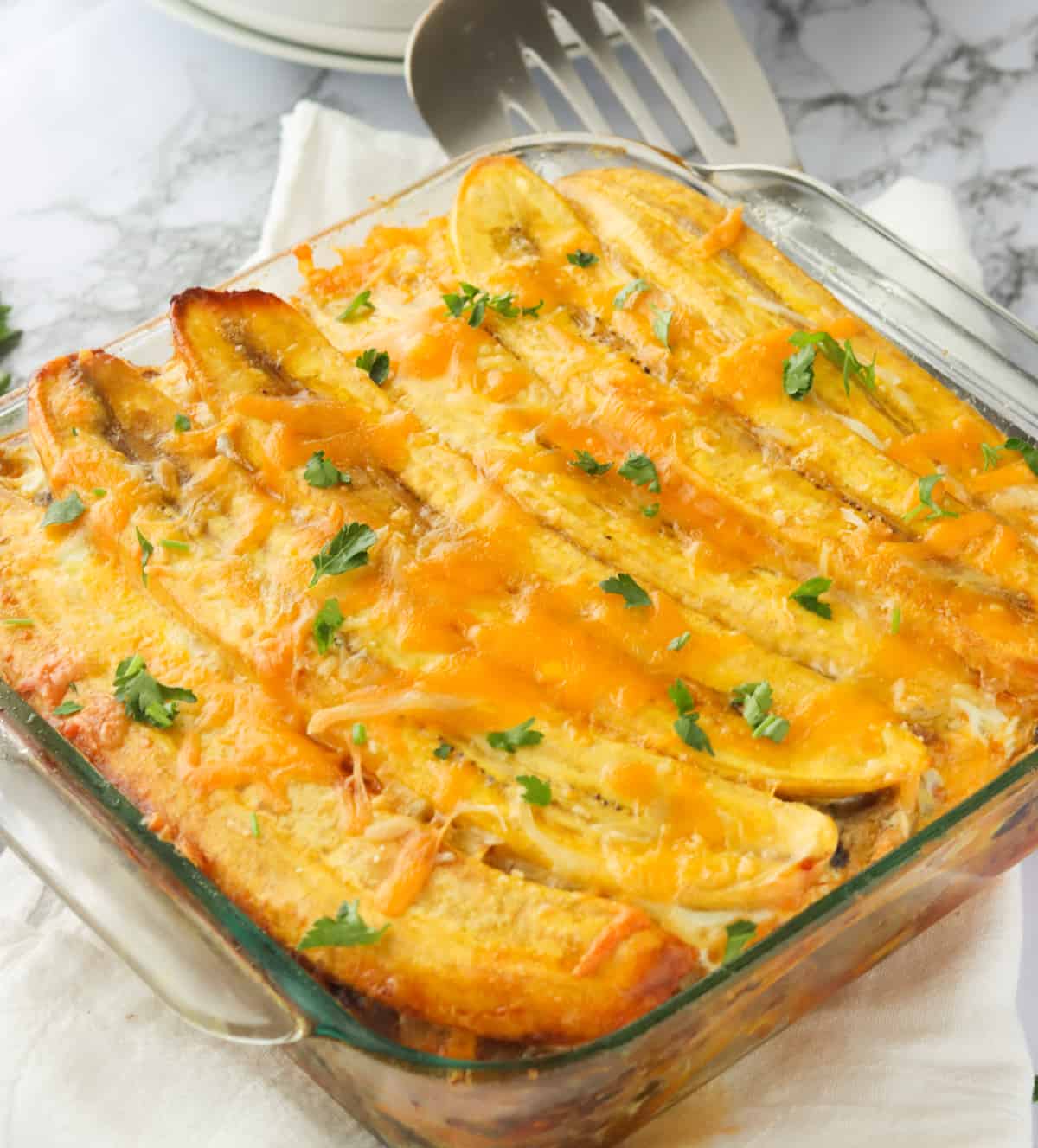
Recipe Variations
This recipe is incredibly flexible, and you can tweak the ingredients however you like. For example, leave out the cheese, and you have a pastelon that is paleo diet-friendly. But you can also leave the meat out for a vegetarian version.
You can use whatever kind of protein you like in this recipe. Any ground meat, beans, or even a meat substitute will work. You can even use two different types of ground meat together if you want to.
Traditionally, this recipe calls for raisins, which add more sweetness. I left them out because I'm not a huge raisin fan, at least not for this dish. Feel free to add them if you are a raisin lover, though.
Tips and Tricks
- If you choose to fry your plantains, don't overcrowd the pan. This will cool the oil too much and result in soggy plantains because they'll absorb too much oil before they cook.
- I like to use moderately ripe plantains for this recipe. They don't fall apart or soak up tons of oil, making them just right for layering.
- To keep your filling from burning while you cook it, add a small amount of broth or water as needed.
- If you want some heat in this recipe, just add more cayenne pepper to taste. You know I always like the option to make things spicy!
Make-Ahead Instructions
Honestly, plantains are a bit tricky to work with, but they're best enjoyed fresh. However, you can prepare part of this recipe in advance. All you do is cook the beef filling in advance, let it cool, transfer it to an airtight container, and put it in the fridge for up to two days. Then, fry the plantains, layer, and bake on the day of serving.
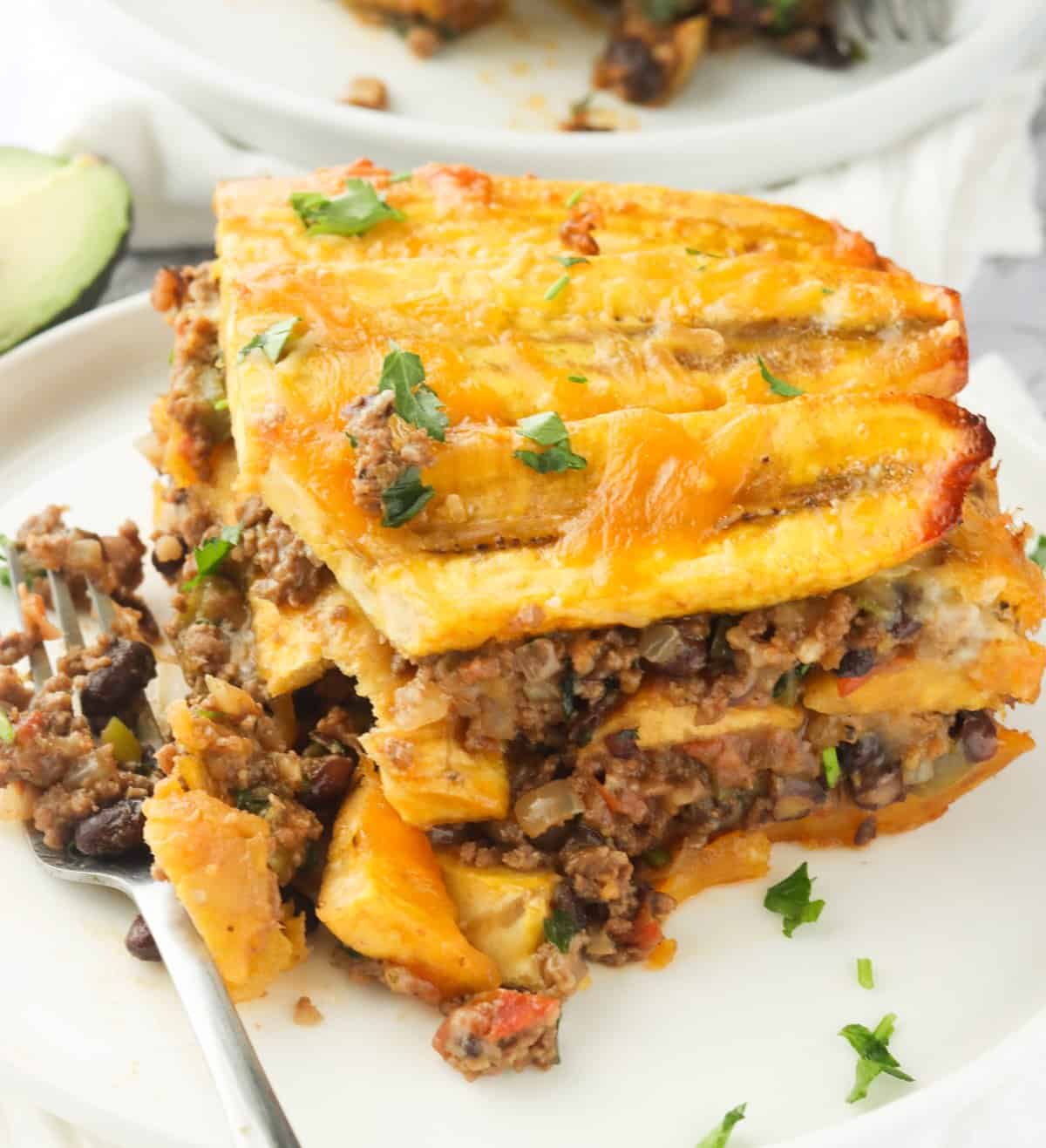
Serving and Storage Instructions
Give your pastelon a few minutes to cool off, and then serve it nice and hot. Cut it into squares like you would regular lasagna to plate individual portions.
Store any leftover pastelon in an airtight container in the fridge, and it will keep for 3-5 days. I don't usually recommend freezing pastelon because of the plantains, but you can freeze pastelon filling in an airtight container for three months. Just thaw it out the night before you want to make pastelon, and one giant step is done already.
You can reheat pastelon in the oven or microwave. If you use the oven, set it to 350℉/177℃ for about 10 minutes or until the pastelon is heated through.
FAQs
How can you tell if plantains are bad?
Plantains that are very soft to the touch (too mushy when you press it gently), start to ooze, or are moldy are bad. Toss them or add them to your compost pile.
How long does it take for green plantains to ripen?
Green plantains will become fully ripe in about 3-5 days at room temperature. However, if you want to accelerate the ripening process, put the plantains in a brown paper bag, close it, and leave it on the countertop.
Who created pastelon?
The history of pastelon is a little unclear, but one story is that Italians came to Puerto Rico in the mid-19th century and may have mixed their cuisine with Taino (native islanders) cuisine, resulting in this more tropical version of lasagna.
What to Serve With Pastelon
Pastelon is super good all by its lonesome, but I definitely like to pair it with a tropical drink. Try serving it with sorrel drink, mango juice, or Jamaican carrot juice. However, Southern sweet tea is a non-traditional drink that is quite refreshing with this dish.
Sometimes, I like to get a little fusion with this recipe and serve it up with bread from another culture.East African chapatior even just a basicflatbread tastes fabulous with it.
More Puerto Rican Recipes to Try
- Pionono
- Arroz con Gandules
- Picadillo
- Pernil (Roast Pork)
- Mofongo
- Pasteles
Conclusion
Don't let that long list of ingredients or steps scare you; this recipe is not at all hard to make. And believe you me, the resulting flavors are so worth the effort! Don't forget to rate this recipe once you've tried it. I know it's going to be a new family favorite. 🤩
Watch How to Make It
>
This blog post was originally published in April 2015 and has been updated with additional tips, new photos, and a video.
Prep: 40 mins
Cook: 1 hr
Total: 1 hr 40 mins
Puerto Rican
- 3-4 large ripe plantains
- 1 medium onion, chopped
- 3 teaspoons (15 g) garlic, minced
- 1 teaspoon (2 g) cumin
- 1 teaspoon (2g) smoked paprika
- ½ -1 teaspoon (1-2 g) cayenne pepper
- 1 teaspoon (1 g) dried oregano or thyme
- ¼ teaspoon (0.5 g) ground coriander
- 1 red or green bell pepper, chopped
- 2 tomatoes, chopped or 1 cup tomato sauce
- 1 pound (453 g) ground beef or chicken
- 1 16-ounce can black beans, drained and rinsed
- 3 tablespoons (45 ml) water
- ½ teaspoon (2.5 g) salt
- 1 packet sazón (or 1 tablespoon chicken bouillon)
- ½ teaspoon (1 g) freshly ground black pepper
- ¼ cup olives, sliced
- 2-3 green onion, chopped
- 2-3 tablespoons parsley, chopped
- 2 cups (470 g) shredded cheese
- 2-3 large eggs
-
Using a sharp knife cut both ends off the plantain. This will make it easy to grab the skin of the plantains. Slit a shallow line down the long seam of the plantain; peel only as deep as the peel. Remove plantain peel by pulling it back. Slice the plantains horizontally into 4-5 pieces depending on plantains. You may either fry or bake the plantains. I prefer frying.
Frying Method
-
Heat up a large skillet or cast iron with oil up to ½ inch- medium-high heat until hot but not smoking.
-
Fry the plantain in batches, turning once, until lightly brown, about 5 minutes. Do not overcrowd the pan (it will make the plantains to be soggy and absorb excess oil).
-
Use a slotted spoon, transfer the fried plantains and drain on paper towels.
Baking Method
-
Spray a baking sheet and place plantains on them in a single layer; spray lightly over the plantains using the canola oil spray and bake at 400 degrees F, turning over slices, after 8 minutes for about 12- 20 minutes or till plantains turn slightly brown.
Making the Filling
-
Next add about 1-2 tablespoons of oil in a skillet followed by onions, garlic, cumin, smoked paprika, cayenne, oregano, coriander and sweat for about a minute.
-
Then add bell pepper, tomatoes or tomato sauce, bring to a simmer. Add ground meat, beans and cook for about 7-10 minutes, while stirring frequently to prevent burning burn. Add about 3 tablespoons of broth or water as needed. Season with salt, chicken bouillon or sazon and black pepper.
-
Finally add olives , green onions and parsley, adjust for seasoning. Remove and set aside
Assembling
-
Spray a deep 8×8 pan with cooking spray or rub with butter/oil.
-
Line the bottom of the baking pan with the fried plantain. Make sure there is no space between the plantains.
-
Add enough of the beef mixture to make a layer, just like you would prepare lasagna. Alternate rows of plantains and meat until both are used up. Add cheese in between, if desired.
-
In a mixing bowl, whisk the eggs and pour over the Pastelon. Making sure to cover the entire thing.
-
Add cheese if desired, or only use cheese
-
Bake at 350 degrees F for 25-30 minutes, or until all the egg has cooked through and the cheese are bubbly.
-
Let it cool then serve warm
- If you choose to fry your plantains, don't overcrowd the pan. This will cool the oil too much and result in soggy plantains because they'll absorb too much oil before they cook.
- I like to use moderately ripe plantains for this recipe. They don't fall apart or soak up tons of oil, making them just right for layering.
- To keep your filling from burning while you cook it, add a small amount of broth or water as needed.
- If you want some heat in this recipe, just add more cayenne pepper to taste. You know I always like the option to make things spicy!
- Please keep in mind that nutritional information is a rough estimate and can vary greatly based on the products used.
Serving: 200 g | Calories: 451 kcal (23%) | Carbohydrates: 48 g (16%) | Protein: 33 g (66%) | Fat: 15 g (23%) | Saturated Fat: 7 g (44%) | Cholesterol: 109 mg (36%) | Sodium: 613 mg (27%) | Potassium: 1189 mg (34%) | Fiber: 9 g (38%) | Sugar: 16 g (18%) | Vitamin A: 2055 IU (41%) | Vitamin C: 43.8 mg (53%) | Calcium: 258 mg (26%) | Iron: 5.1 mg (28%)
Reader Interactions
Source: https://www.africanbites.com/plantain-lasagna/